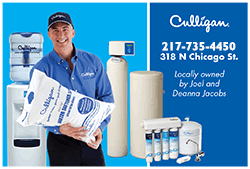Japan intervenes in FX market to stem yen falls after BOJ keeps
super-low rates
 Send a link to a friend
Send a link to a friend
 [September 22, 2022] By
Leika Kihara and Daniel Leussink [September 22, 2022] By
Leika Kihara and Daniel Leussink
TOKYO (Reuters) -Japan intervened in the
foreign exchange market on Thursday to buy yen for the first time since
1998, in an attempt to shore up the battered currency after the Bank of
Japan stuck with ultra-low interest rates.
The move sent the dollar plunging over 2% to around 140.3 yen, after
trading more than 1% higher earlier on the BOJ's decision to stick to
its super-loose policy stance, bucking a global tide of monetary
tightening by central banks fighting soaring inflation.
The dollar/yen later pared losses and was down about 1% at 142.76 as of
1043 GMT.[FRX/]
"We have taken decisive action (in the exchange market)," vice finance
minister for international affairs Masato Kanda told reporters,
responding in the affirmative when asked if that meant intervention.
Analysts, however, doubted whether the move would halt the yen's
prolonged slide for long. The currency has depreciated nearly 20% this
year, sinking to 24-year lows, largely as aggressive U.S. interest rate
hikes push the dollar higher.

"The market was expecting some intervention at some point, given the
increasing verbal interventions we have been hearing over the past few
weeks," said Stuart Cole, head macro economist at Equiti Capital in
London.
"But currency interventions are rarely successful and I expect today's
move will only provide a temporary reprieve (for the yen)."
Finance Minister Shunichi Suzuki declined to disclose how much
authorities had spent buying yen and whether other countries had
consented to the move.
Joining Suzuki at the briefing, Kanda said Japan has "good
communication" with the United States, but declined to say whether
Washington had consented to Tokyo's intervention.
As a protocol, currency intervention requires informal consent by
Japan's G7 counterparts, notably the United States, if it were to be
conducted against the dollar/yen.
Confirmation of intervention came hours after the BOJ's decision to hold
rates at near zero to support the country's fragile economic recovery, a
position many analysts believe to be increasingly untenable given the
global shift to higher borrowing costs.
BOJ Governor Haruhiko Kuroda told reporters the central bank could hold
off on hiking rates or changing its dovish policy guidance for years.
"There's absolutely no change to our stance of maintaining easy monetary
policy for the time being. We won't be raising interest rates for some
time," Kuroda said after the policy decision.
[to top of second column] |

Japanese yen and U.S. dollar banknotes
are seen in this illustration picture taken June 16, 2022.
REUTERS/Florence Lo/Illustration

The BOJ's decision came after the U.S. Federal Reserve delivered its
third straight rate increase of 75 basis points on Wednesday and
signalled more hefty hikes ahead, underscoring its resolve not to
let up in its battle against inflation and giving a further boost to
the dollar.
Japan also became a loner among major economies in keeping
short-term rates in negative territory after the Swiss National Bank
on Thursday raised its policy rate by 0.75% point, ending years of
minus rates aimed at taming the appreciation of its
currency.[L8N30T1E2]
SNB Chairman Thomas Jordan told a briefing his bank was not taking
part in any coordinated measures to support the yen.
WEAPON OF LAST RESORT
With the BOJ having ruled out a near-term rate hike, currency
intervention was the most powerful -- and last-resort -- weapon that
Japan had left to arrest sharp yen falls that were pushing up import
costs and threatening to hurt consumption.
"The first Japanese currency intervention in near a quarter century
is a significant, but ultimately doomed step to defend the yen,"
said Ben Laidler, global markets strategist at Etoro in London.
"As long as the Fed stays on the hawkish, rate-raising front foot,
any yen intervention is likely to only slow, not halt, the yen
slide."
Yen-buying intervention has been very rare. The last time Japan
intervened to support its currency was in 1998, when the Asian
financial crisis triggered a yen sell-off and a rapid capital
outflow from the region. Before that, Tokyo intervened to counter
yen falls in 1991-1992.
Yen-buying intervention is also considered more difficult than
yen-selling.

In an yen-selling intervention, Japan can keep printing yen to sell
to the market. But for yen-buying intervention, Japan needs to tap
its $1.33 trillion of foreign reserves which, while abundant, could
quickly dwindle if huge sums are required to influence rates.
(Reporting by Leika Kihara; Additional reporting by Tetsushi
Kajimoto, Kantaro Komiya, Daniel Leussink, Kaori Kaneko and Takaya
Yamaguchi in Tokyo, Bansari Mayur Kamdar in Bangalore; Editing by
Richard Pullin, Sam Holmes and Kim Coghill)
[© 2022 Thomson Reuters. All rights
reserved.]
This material may not be published,
broadcast, rewritten or redistributed.
Thompson Reuters is solely responsible for this content. |